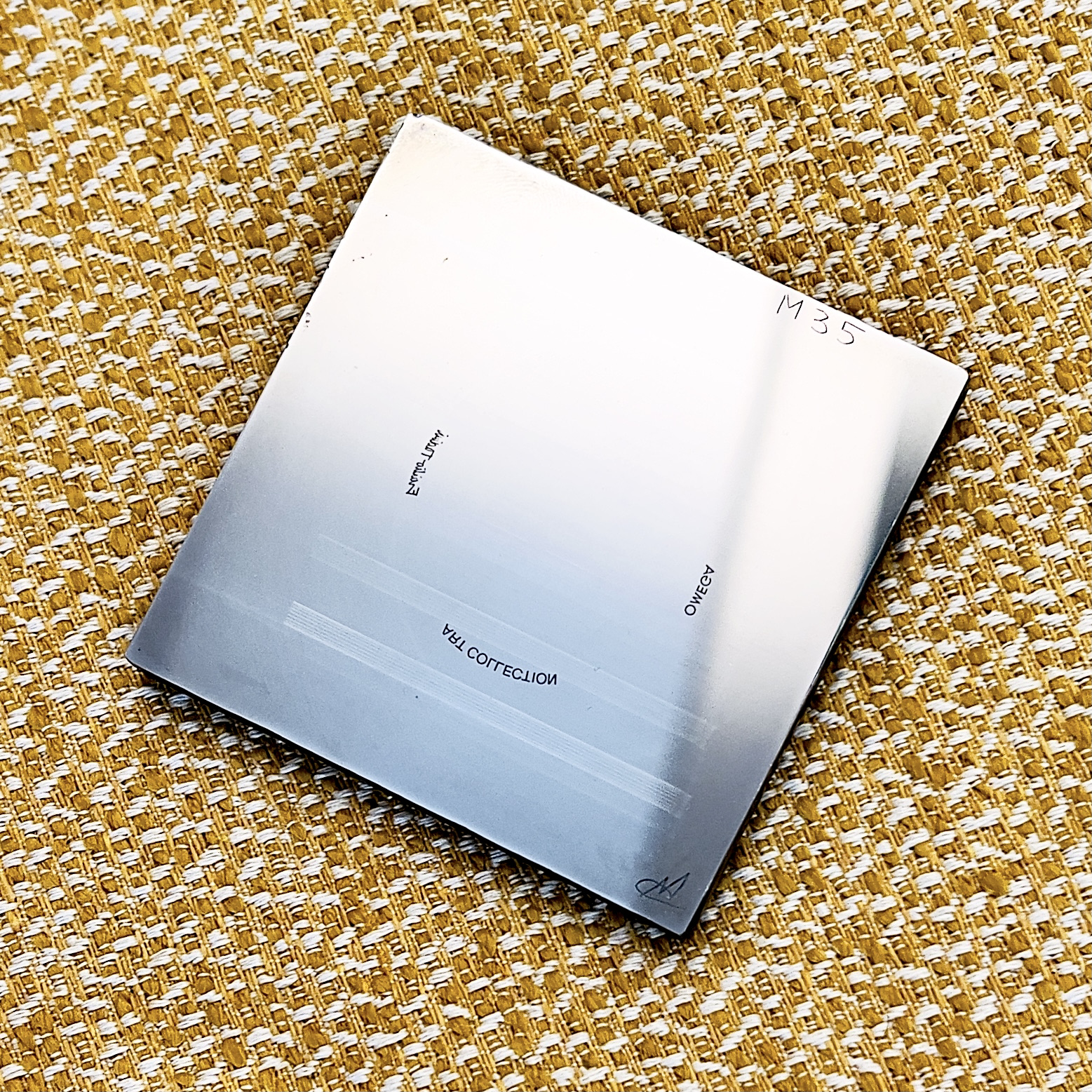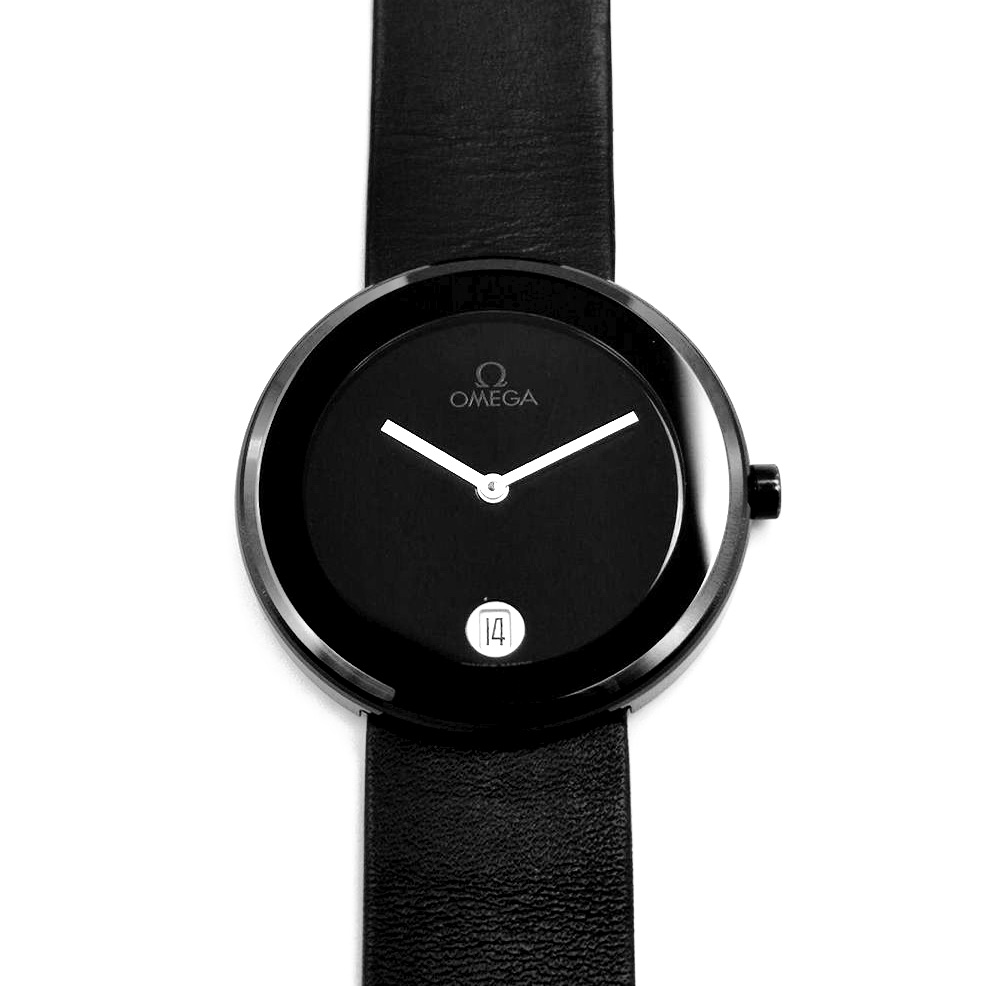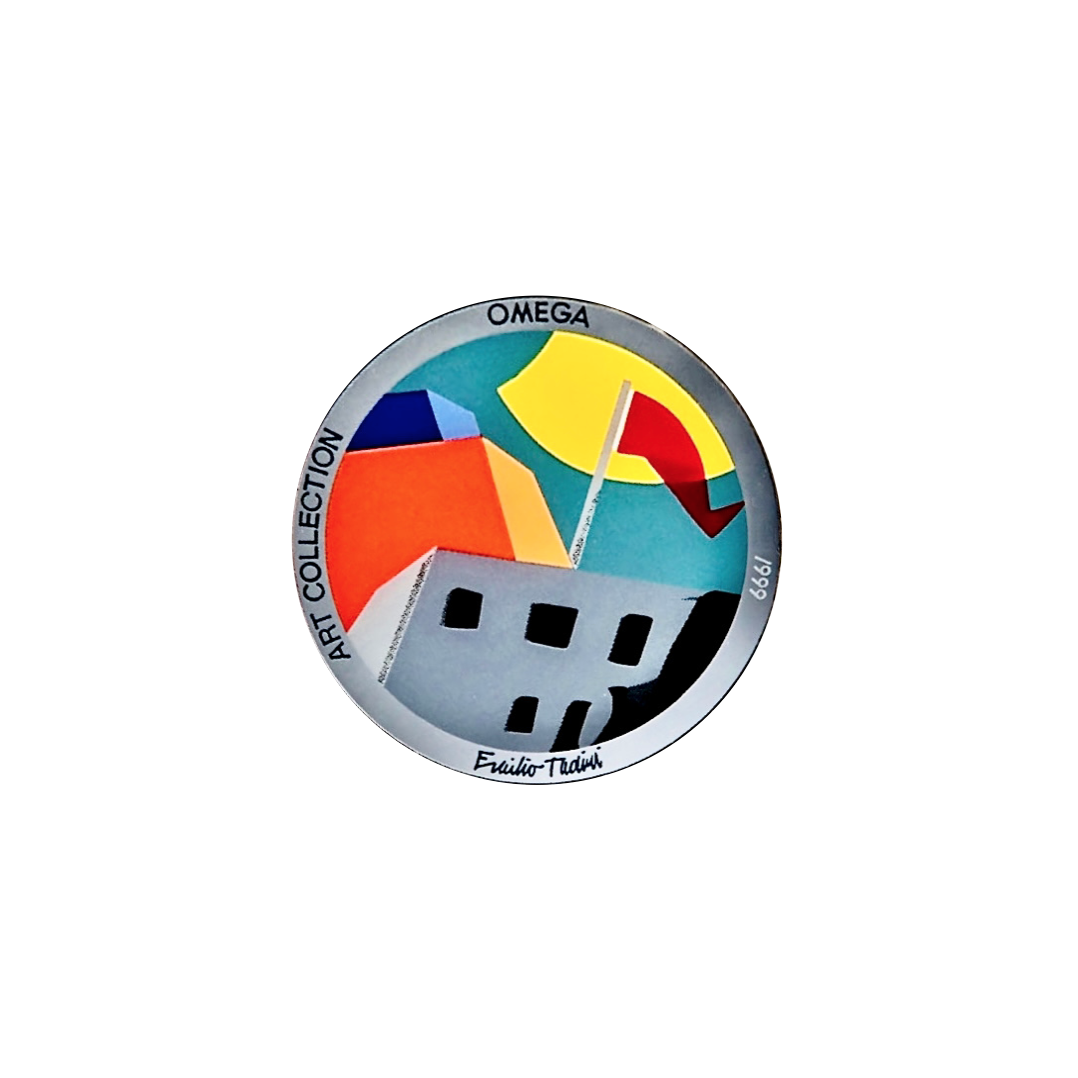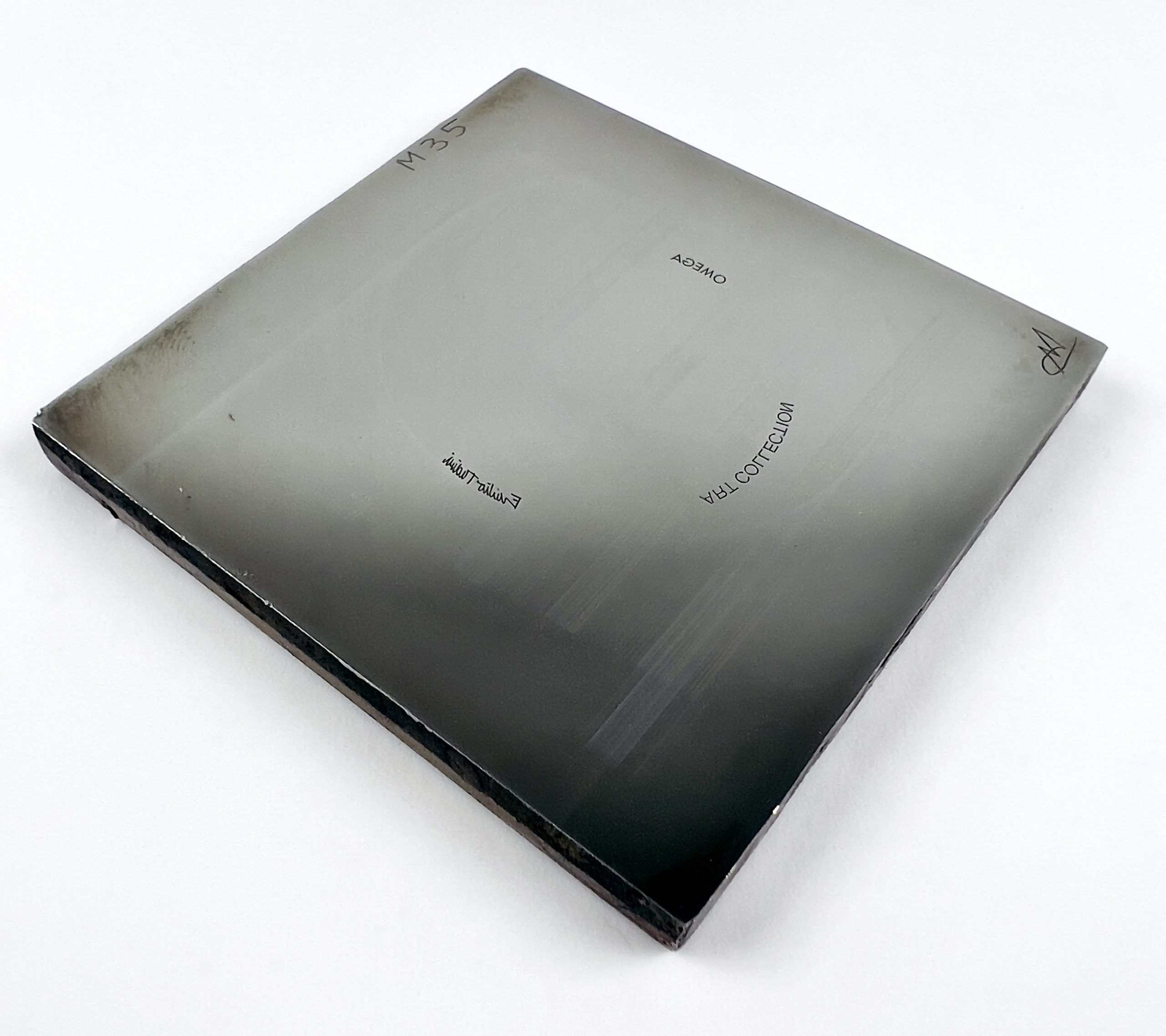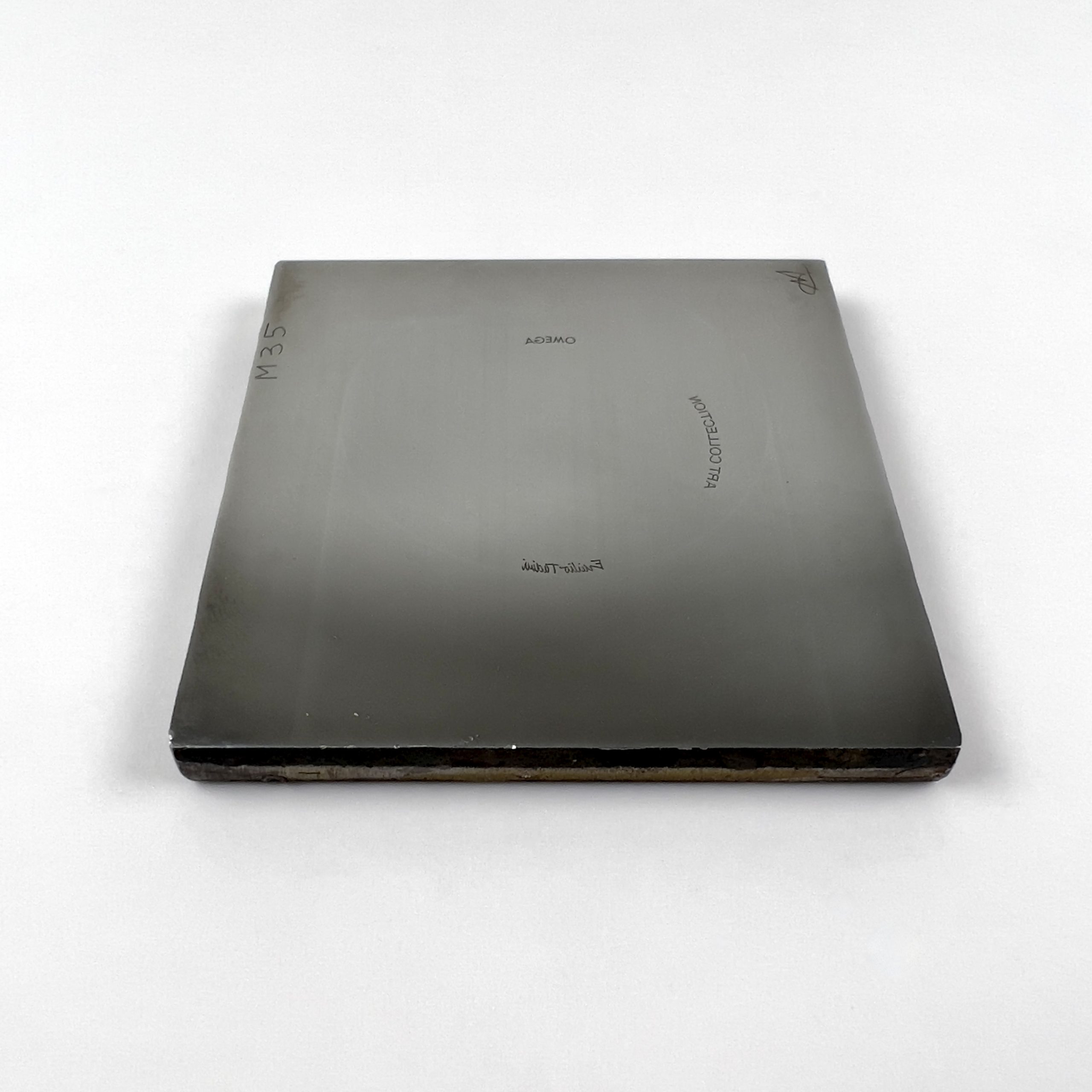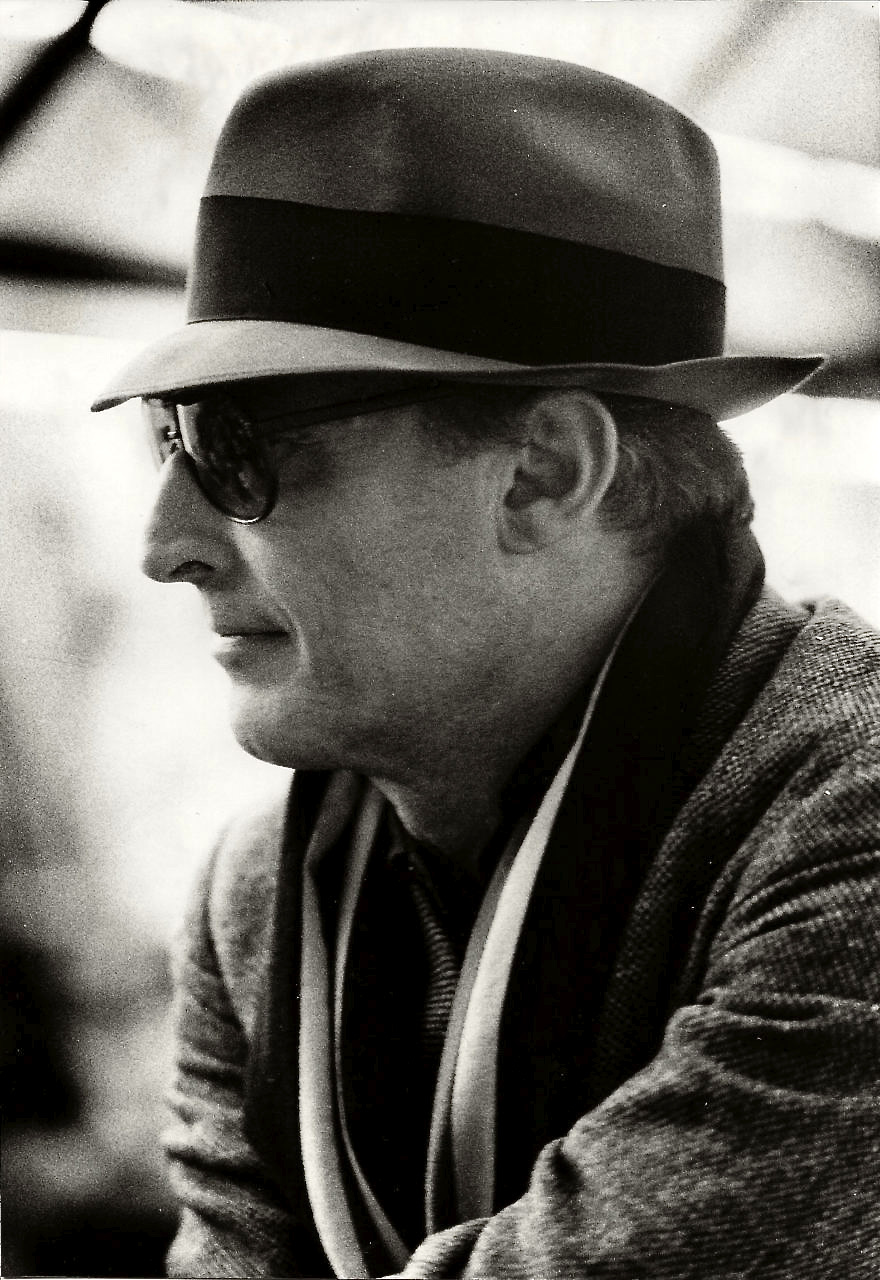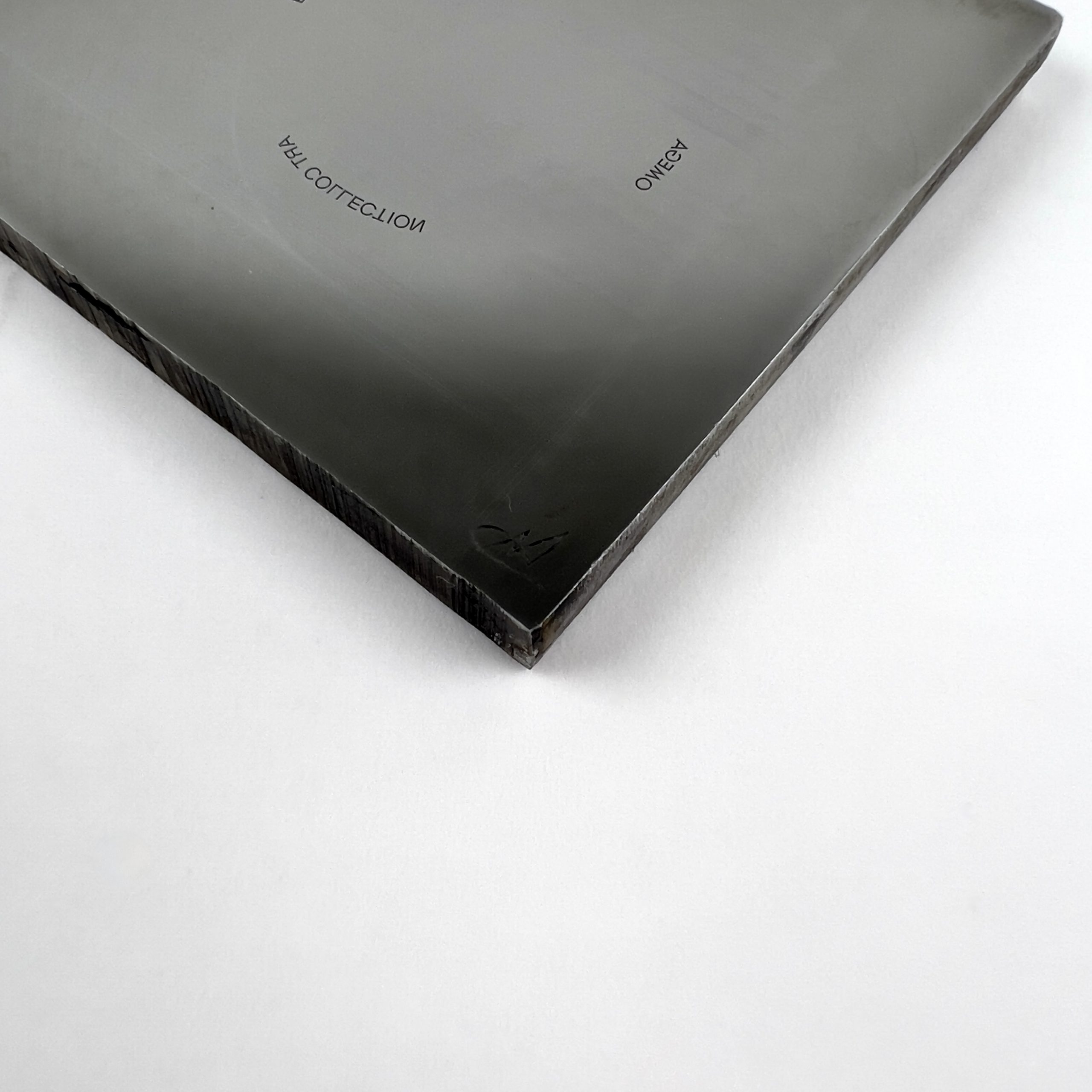-
PRINTING PLATE
OMEGA "ART COLLECTION"
1987 EMILIO TADINI
-
-
One-of-a-kind. Steel printing plate used to manufacture cases for Omega.
This plate was intended for the production of the "OMEGA ART COLLECTION" published in 1987.
-
Omega's "Art Collection" was created in a new scratch-resistant ceramic alloy with pure, sober lines and bold contrasts of black and white, the watches in this collection are characterized above all by their case backs. This usually hidden space reveals a collection of exclusive works of concrete art, produced in limited editions of 999 watches signed by famous contemporary constructivist artists such as Max Bill, Richard Paul Lose and Paul Talman, followed by Camille Graeser, Fritz Glarner, Al Held, Kenneth Noland, Arnaldo Pomodoro, Valerio Adami and Emilio Tadini.
Presented in October 1986 and tested in November, the three basic ceramic models (maxi 40 mm, midi 32 mm and mini 22.3 mm) were complemented by yellow gold, white gold and jewelry models as soon as they were officially launched in Switzerland (1987). A project led by Ernest Thomke, then Omega's Managing Director, and based on a case design by Hans Zaugg, an external consultant from Derendingen, and a medallion concept by Gerhard Saner, Managing Director of Saner Metallisation AG, Studen.
-
Pad printing is an indirect printing system that can be used to mark any type of substrate, whatever its shape.
This process, which uses a silicone rubber transfer pad to pick up the ink contained in the hollow of an engraved cliché obtained by chemical photoengraving on an object, deposits a very thin film of ink on a variety of regular or irregular surfaces. This process guarantees fast, precise marking, whatever the volume.
The silicone pad "picks up" the image engraved on the flat plate and deposits it on the surface of the substrate to be printed.
This cliché is a heavyweight piece that can be presented as a paperweight or simply as a unique object for any collector of the brand.

